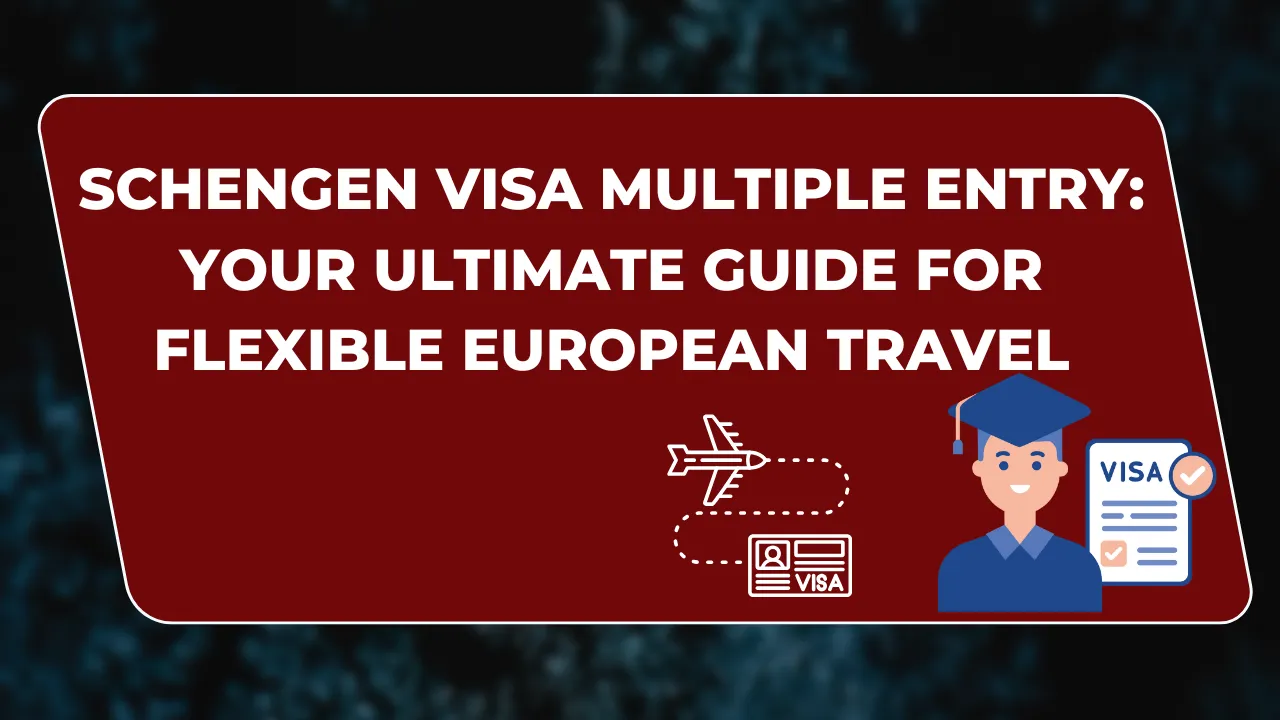Traveling across Europe can be a dream come true, but to explore multiple countries efficiently, understanding the Schengen visa multiple entry option is essential. This visa type allows travelers to enter and exit the Schengen Area multiple times during the validity period, providing flexibility for business trips, vacations, or family visits. Knowing the rules, requirements, and benefits of a multiple-entry Schengen visa ensures a smoother journey across Europe.
What Is a Schengen Visa Multiple Entry?
A Schengen visa multiple entry, also known as a multiple-entry Schengen visa (MEV), permits travelers to enter and exit Schengen countries several times within the visa validity period. Unlike a single-entry visa, which allows only one entry, a multiple-entry visa is ideal for frequent travelers or those who need to return to their home country or travel outside the Schengen Zone temporarily.
Benefits of a Multiple-Entry Schengen Visa
-
Flexibility: Travel in and out of the Schengen Area without applying for a new visa each time.
-
Convenience: Ideal for business travelers, students, or tourists planning multiple trips.
-
Cost-effective: Eliminates the need to pay visa fees multiple times.
-
Extended Travel Planning: Allows visiting multiple countries in Europe during the visa validity period.
Eligibility for a Multiple-Entry Schengen Visa
Not every traveler automatically qualifies for a multiple-entry visa. Eligibility often depends on:
-
Previous Schengen visa history and compliance
-
Purpose of travel (business, tourism, or family visits)
-
Financial stability to support multiple trips
-
Strong ties to the home country to ensure return
Frequent travelers who have previously complied with visa rules are more likely to be granted a multiple-entry visa.
Types of Schengen Multiple-Entry Visas
Multiple-entry Schengen visas can be issued for different durations:
-
Short-term multiple-entry visa: Valid for 6 months, allowing up to 90 days of stay within 180 days.
-
Long-term multiple-entry visa: Valid for 1 year, allowing multiple visits while staying up to 90 days in each 180-day period.
-
Extended multiple-entry visa: Valid for 3 or 5 years in exceptional cases, primarily for frequent business travelers.
The duration and number of entries granted are determined by the consulate based on the traveler’s history and purpose.
Documents Required for a Multiple-Entry Schengen Visa
Applying for a multiple-entry Schengen visa generally requires:
-
Valid passport (at least six months beyond the planned stay)
-
Completed visa application form
-
Passport-sized photographs
-
Travel itinerary and round-trip flight bookings
-
Proof of accommodation for each visit
-
Proof of financial means (bank statements, salary slips, sponsorship letters)
-
Travel insurance covering at least €30,000 for medical emergencies and repatriation
-
Cover letter explaining the need for multiple entries
-
Additional documents like invitation letters or business contracts if applicable
How to Apply for a Multiple-Entry Schengen Visa
The application process follows similar steps to a single-entry visa:
-
Determine the main destination: Apply to the consulate of the country where you will spend the most time.
-
Book an appointment: Embassies and visa centers require appointments for submission.
-
Prepare documents carefully: Ensure all paperwork meets the specific requirements for multiple-entry applications.
-
Attend the interview: Some applicants may be asked to explain their travel frequency or purpose.
-
Pay the visa fee: Typically €80 for adults; fees may vary for children or multiple-entry visas.
-
Wait for processing: Processing may take longer for multiple-entry visas, up to 30 days or more.
-
Receive the visa: If approved, your passport will contain the multiple-entry Schengen visa stamp.
Duration and Validity of a Multiple-Entry Visa
A multiple-entry visa is valid for a specific period, usually 6 months to 5 years, depending on the applicant’s profile. However, travelers must adhere to the 90/180-day rule, which means they can stay in the Schengen Area for up to 90 days within any 180-day period. Overstaying can affect future visa applications.
Common Mistakes to Avoid
-
Applying for multiple-entry without a clear purpose or travel history
-
Submitting incomplete or inconsistent documentation
-
Ignoring financial proof for repeated visits
-
Miscalculating the 90/180-day stay rule
-
Overstaying the visa validity, which may lead to fines or bans
Tips for Traveling with a Multiple-Entry Schengen Visa
-
Keep track of entry and exit dates to avoid exceeding 90 days in 180 days.
-
Maintain all proof of travel and accommodation for each visit.
-
Ensure travel insurance covers the entire visa validity period.
-
Use the multiple-entry visa strategically for business, tourism, and family visits.
-
Monitor visa expiration and apply for renewal in advance if you plan frequent travel.
Costs and Fees
The standard Schengen visa fee for adults is €80. Children, students, or frequent travelers may pay reduced fees. Multiple-entry visas may have the same fee as single-entry visas, but in some countries, long-term multiple-entry permits may have higher fees.
Benefits Beyond Travel Convenience
-
Enables exploring multiple European countries with ease
-
Reduces administrative hassles by eliminating repeated visa applications
-
Ideal for business professionals who travel regularly for meetings or conferences
-
Provides flexibility for emergency trips or family visits without delays
Conclusion
A Schengen visa multiple entry is a valuable option for travelers who need flexibility, frequent access, and the ability to move freely across Europe. By understanding eligibility criteria, required documents, and the application process, travelers can maximize their opportunities while complying with Schengen rules.
Whether for business, tourism, or visiting family, a multiple-entry Schengen visa ensures smooth, convenient, and legally compliant travel across Europe. Proper planning, careful documentation, and awareness of the 90/180-day rule are essential for making the most of this visa option.

















